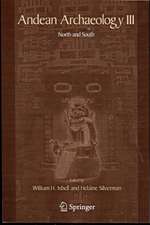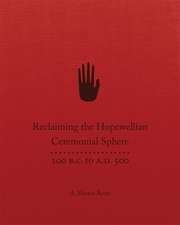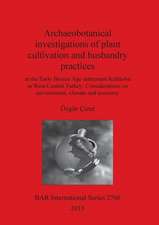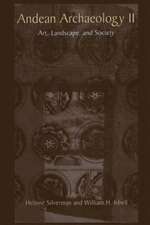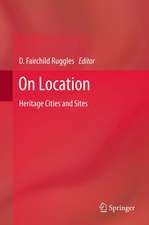Intangible Heritage Embodied
Editat de D. Fairchild Ruggles, Helaine Silvermanen Limba Engleză Hardback – 15 iun 2009
Since this convention was adopted, scholars and preservationists have struggled with how to best approach intangible heritage. This volume specifically focuses on embodied intangible heritage, or the human body as a vehicle for memory, movement, and sound. The contributors to this work examine ritual and artistic movement, theater, music, oral literature, as well as the role of the internet in cultural transmission. Globalization and particularly the internet, has a complex effect on the transmission of intangible heritage: while music, dance, and other expressions are now shared easily, the performances often lack context and may be shared with a group that does not fully understand what they are seeing or hearing.
This volume draws on case studies from around the world to examine the problems and possibilities of implementing the new UNESCO convention. The findings in this volume will be vital to both professionals and academics in anthropology, archaeology, history, museum studies, architecture, and anyone else who deals with issues of cultural heritage and preservation.
| Toate formatele și edițiile | Preț | Express |
|---|---|---|
| Paperback (1) | 626.23 lei 6-8 săpt. | |
| Springer – 29 oct 2010 | 626.23 lei 6-8 săpt. | |
| Hardback (1) | 632.33 lei 6-8 săpt. | |
| Springer – 15 iun 2009 | 632.33 lei 6-8 săpt. |
Preț: 632.33 lei
Preț vechi: 743.91 lei
-15% Nou
Puncte Express: 948
Preț estimativ în valută:
121.05€ • 124.49$ • 100.43£
121.05€ • 124.49$ • 100.43£
Carte tipărită la comandă
Livrare economică 20 februarie-06 martie
Preluare comenzi: 021 569.72.76
Specificații
ISBN-13: 9781441900715
ISBN-10: 1441900713
Pagini: 226
Ilustrații: X, 214 p. 53 illus.
Dimensiuni: 155 x 235 x 14 mm
Greutate: 0.49 kg
Ediția:2009
Editura: Springer
Colecția Springer
Locul publicării:New York, NY, United States
ISBN-10: 1441900713
Pagini: 226
Ilustrații: X, 214 p. 53 illus.
Dimensiuni: 155 x 235 x 14 mm
Greutate: 0.49 kg
Ediția:2009
Editura: Springer
Colecția Springer
Locul publicării:New York, NY, United States
Public țintă
ResearchCuprins
From Tangible to Intangible Heritage.- The Heritage of Kunqu: Preserving Music and Theater Traditions in China.- Partition Memories: The Hidden Healer.- Gardens and Landscapes: At the Hinge of Tangible and Intangible Heritage.- Preserving the Cultural Landscape Heritage of Champaner-Pavagadh, Gujarat, India.- Governance and Conservation of the Rapaz Khipu Patrimony.- Geographies of Memory and Identity in Oceania.- Combating Attempts of Elision: African American Accomplishments at New Philadelphia, Illinois.- Folk Epigraphy at the World Trade Center, Oklahoma City, and Beyond.- Problematizing Technologies for Documenting Intangible Culture: Some Positive and Negative Consequences.
Textul de pe ultima copertă
Archaeological research has long focused on studying tangible artifacts to build a picture of the cultures it examines. Equally important to understanding a culture, however, are the intangible elements that become part of its heritage. In 2003, UNESCO adopted a convention specifically to protect intangible heritage, including the following: oral traditions and expressions, including language; performing arts (such as traditional music, dance, and theater); social practices, rituals, and festive events; knowledge and practices concerning nature and the universe; and traditional craftsmanship.
Since this convention was adopted, scholars and preservationists have struggled with how to best approach intangible heritage. This volume specifically focuses on embodied intangible heritage, or the human body as a vehicle for memory, movement, and sound. The contributors to this work examine ritual and artistic movement, theater, music, oral literature, as well as the role of the internet in cultural transmission. Globalization and particularly the internet, has a complex effect on the transmission of intangible heritage: while music, dance, and other expressions are now shared easily, the performances often lack context and may be shared with a group that does not fully understand what they are seeing or hearing.
This volume draws on case studies from around the world to examine the problems and possibilities of implementing the new UNESCO convention. The findings in this volume will be vital to both professionals and academics in anthropology, archaeology, history, museum studies, architecture, and anyone else who deals with issues of cultural heritage and preservation.
Since this convention was adopted, scholars and preservationists have struggled with how to best approach intangible heritage. This volume specifically focuses on embodied intangible heritage, or the human body as a vehicle for memory, movement, and sound. The contributors to this work examine ritual and artistic movement, theater, music, oral literature, as well as the role of the internet in cultural transmission. Globalization and particularly the internet, has a complex effect on the transmission of intangible heritage: while music, dance, and other expressions are now shared easily, the performances often lack context and may be shared with a group that does not fully understand what they are seeing or hearing.
This volume draws on case studies from around the world to examine the problems and possibilities of implementing the new UNESCO convention. The findings in this volume will be vital to both professionals and academics in anthropology, archaeology, history, museum studies, architecture, and anyone else who deals with issues of cultural heritage and preservation.
Caracteristici
First volume of its depth to examine intangible cultural heritage Practical guide with a broad theoretical scope Contributors from interdisciplinary and international fields of study

